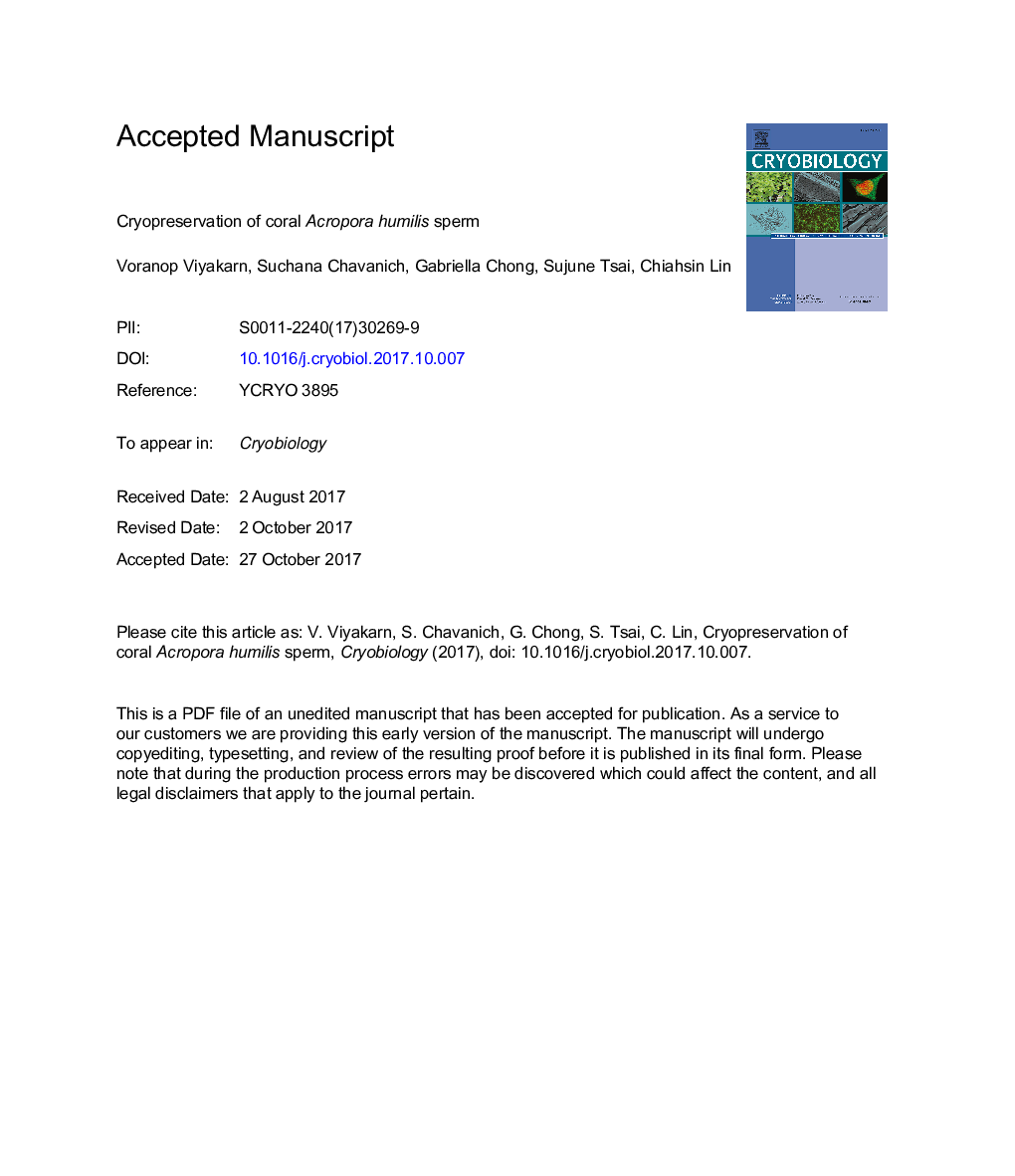| Article ID | Journal | Published Year | Pages | File Type |
|---|---|---|---|---|
| 8464390 | Cryobiology | 2018 | 30 Pages |
Abstract
Corals are sensitive to minute changes in their environments, and their continued existence is substantially threatened by the increasing number of destructive anthropogenic activities and unprecedented rates of climate change. Although cryopreservation has been successfully to preserve mammalian gametes for decades, coral cryopreservation was attempted for the first time less than 15 years ago, and freezing protocols exist for only a handful of coral species. The present study developed a cryopreservation protocol for the sperm of the common Indo-Pacific reef-builder Acropora humilis. Colonies of reefs of Sattahip Bay, Chonburi Province, Thailand were collected from 3 m depth with a mesh net during a spawning event. Immediately after collection, the sperm were isolated and subjected to a two-step freezing method featuring DMSO, polyethylene glycol, or methanol as the cryoprotectant. Viability and motility were assessed via a bioluminescence technique and a “computer-assisted semen analysis, and it was found that a 15-min equilibration with 2 M DMSO followed by cooling at 41.7 °C was the optimum cryopreservation protocol for A. humilis sperm. The post-thaw sperm achieved 45% fertilization success, and 35% of the fertilized eggs developed into blastopore larvae. The present optimized protocol can therefore facilitate the preservation of sperm for future propagation efforts of this species and provide an experimental platform for optimizing cryopreservation protocols for gametes of other scleractinian coral species.
Keywords
Related Topics
Life Sciences
Agricultural and Biological Sciences
Agricultural and Biological Sciences (General)
Authors
Voranop Viyakarn, Suchana Chavanich, Gabriella Chong, Sujune Tsai, Chiahsin Lin,
